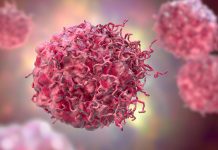
A new link between muscle proteins and Type 2 diabetes could help to inform more targeted preventative treatment for the condition.
A collaborative study by researchers at the University of Helsinki, the Helsinki University Hospital, and the Minerva Foundation Institute for Medical Research investigated the link between skeletal muscle proteome and Type 2 diabetes.
The results were published in the iScience journal.
Prediabetes
Before the onset of Type 2 diabetes, people are often diagnosed with abnormalities in glucose metabolism that are milder than those associated with diabetes. The term used to indicate such cases is prediabetes. Insulin resistance in muscle tissue is one of the earliest metabolic abnormalities detected in individuals who are developing Type 2 diabetes, and the phenomenon is already seen in prediabetes.
To investigate the link between muscle tissue and diabetes further, researchers looked at how the protein composition of the thigh muscle in men whose glucose tolerance varied from normal to that associated with prediabetes and Type 2 diabetes. A total of 148 muscle samples were analysed.
Docent Heikki Koistinen, from the University of Helsinki, Helsinki University Hospital and Minerva Foundation Institute for Medical Research, who headed the study, said: “Our study is the broadest report on human muscle proteomes so far. The findings confirm earlier observations that have exposed abnormalities in muscle mitochondria in connection with Type 2 diabetes.”
Protein concentration already reduced in prediabetes
The researchers utilised mass spectrometry, enabling them to identify over 2,000 muscle proteins. According to the findings, the quantity of dozens of proteins had already changed in prediabetic study subjects. The greatest changes were observed in connection with Type 2 diabetes, where the quantity of more than 400 proteins had primarily dropped. Most of these proteins were associated with mitochondrial energy metabolism. In fact, the results highlight the significance of mitochondria when prediabetes is progressing toward Type 2 diabetes.
“We found that the levels of mitochondrial muscle proteins are clearly reduced already in prediabetes,” Koistinen noted.
The researchers also observed abnormalities, both in conjunction with prediabetes and Type 2 diabetes, in the concentration of a range of phosphoproteins, which affect metabolism and muscle function.
Regular physical activity as targeted therapy
The researchers believe their new observations have multiple uses, including in the search for new drug targets.
“Still, there already exists an excellent and economical targeted therapy, since regular physical activity increases the number of muscle mitochondria and improves metabolism diversely,” Koistinen commented.
Physical activity is also key when reducing the risk of developing diabetes.






















